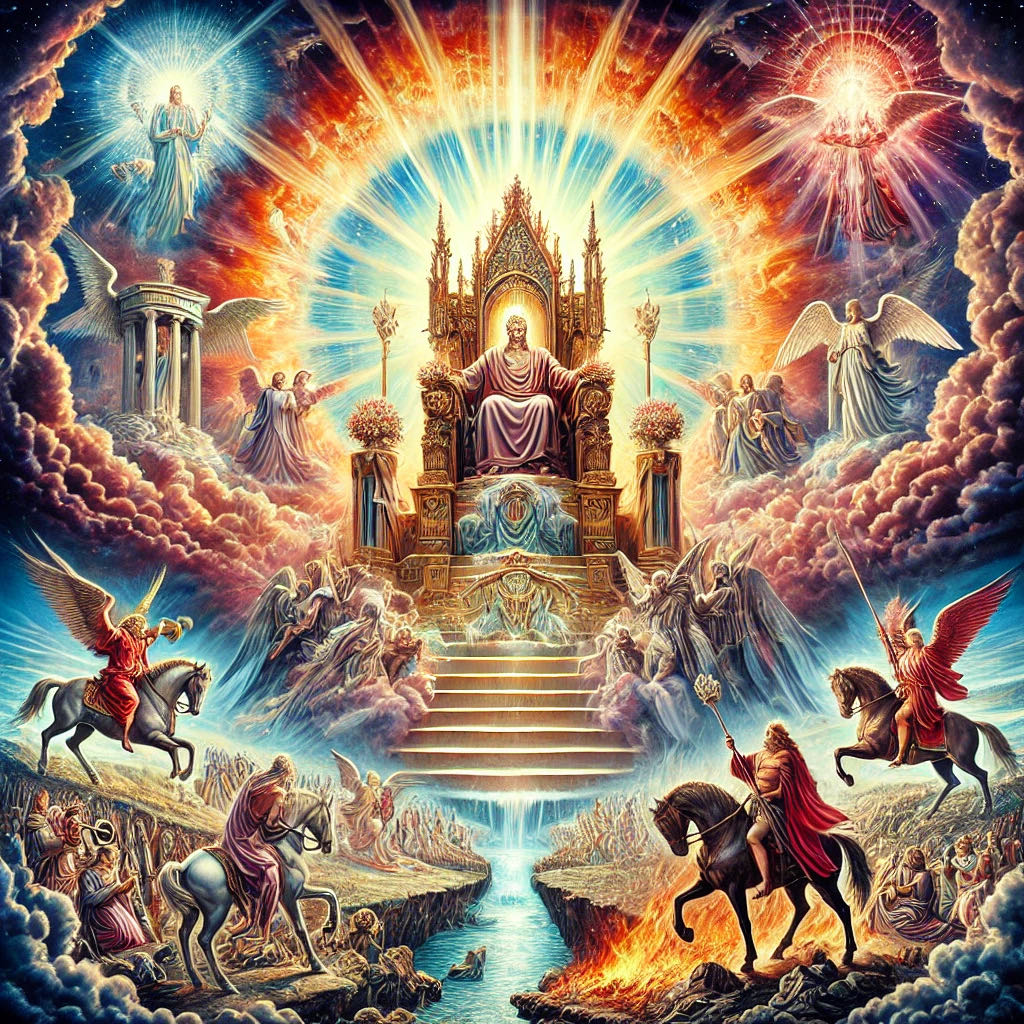
《启示录》是《圣经》新约中的最后一本书,充满了象征性和预言性的语言。理解《启示录》需要考虑其历史背景、文学形式和神学意义。以下是一些关键点,帮助你更好地理解《启示录》:
历史背景
1、作者和写作时间:
《启示录》由使徒约翰在公元95-96年左右写成,当时他被流放在拔摩岛上。
当时,罗马帝国正处于多米提安皇帝的统治下,基督徒受到迫害。
2、读者对象:
《启示录》最初是写给七个亚细亚教会的信件,针对的是这些教会的具体情况和挑战。
文学形式
1、启示文学:
《启示录》属于启示文学,这种文学体裁使用大量象征和隐喻,旨在揭示超自然的真理。
其象征包括数字、颜色、动物和其他图像,这些符号常常代表特定的神学和历史意义。
2、象征性语言:
《启示录》充满了象征性的语言,如七个印、七个号角和七个碗。这些象征常常代表神的审判和拯救的过程。
神学意义
1、主线剧情:
《启示录》揭示了世界末日的景象,包括最后的审判和新天新地的建立。
主要部分包括:
- 序言和致辞(第1-3章)
- 天上的景象和七印(第4-7章)
- 七号(第8-11章)
- 末世的争战(第12-14章)
- 七碗(第15-16章)
- 巴比伦的灭亡和羔羊的胜利(第17-19章)
- 千年王国和最后的审判(第20章)
- 新天新地和新耶路撒冷(第21-22章)
2、核心信息:
《启示录》传达了神的主权和最终胜利的信心。无论面临怎样的迫害和困境,神的计划终将实现,信徒将获得永恒的生命。
它鼓励信徒在面对苦难时坚守信仰,保持对神的忠诚。
理解方法
1、象征解释:
研究《启示录》中的象征需要参考整个《圣经》,尤其是《旧约》中类似的象征和预言。
例如,七是完美和完整的数字,龙通常代表撒旦或邪恶的力量,羔羊象征耶稣基督。
2、历史背景:
理解《启示录》中的预言,需结合当时的历史背景。例如,罗马帝国的压迫和基督教的早期历史。
3、神学研究:
阅读相关的神学评论和研究著作,可以帮助更深入地理解《启示录》的内容和意义。
参加圣经研讨会或听取牧师和神学家的讲解,也有助于更好地理解这本书。
结语
《启示录》是一部充满象征和预言的书,旨在揭示神的主权和最终的胜利。理解它需要结合历史背景、象征性语言和神学意义。通过研究《圣经》的其他部分和相关的神学著作,读者可以更好地理解和应用《启示录》的信息。
(如有建议敬请留言讨论,邮箱:[email protected])
Revisiting Revelation: Understanding Its Message

Revelation is the last book of the New Testament, filled with symbolic and prophetic language. Understanding Revelation requires considering its historical background, literary style, and theological significance. Here are some key points to help you better understand Revelation:
Historical Background
- Author and Date:
Revelation was written by the apostle John around AD 95–96 while he was exiled on Patmos. At that time, the Roman Empire was under Emperor Domitian, and Christians were persecuted.
- Intended Readers:
Originally, Revelation was addressed to the seven churches in Asia, specifically concerning their unique situations and challenges.
Literary Form
- Apocalyptic Literature:
Revelation belongs to the genre of apocalyptic literature, which uses rich symbolism and metaphor to reveal supernatural truths. Its symbols—including numbers, colors, animals, and other images—often carry specific theological and historical meanings.
- Symbolic Language:
Revelation is filled with symbolic language, such as the seven seals, seven trumpets, and seven bowls. These symbols generally represent the processes of God’s judgment and salvation.
Theological Significance
- Main Narrative:
Revelation unveils the scenes of the end times, including the final judgment and the creation of a new heaven and new earth. Major sections include:
- Introduction and the Letters to the Churches (Chapters 1–3)
- Heavenly Visions and the Seven Seals (Chapters 4–7)
- The Seven Trumpets (Chapters 8–11)
- The Final Battle (Chapters 12–14)
- The Seven Bowls (Chapters 15–16)
- The Fall of Babylon and the Victory of the Lamb (Chapters 17–19)
- The Millennium and the Final Judgment (Chapter 20)
- The New Heaven, New Earth, and the New Jerusalem (Chapters 21–22)
- Core Message:
Revelation conveys the sovereignty of God and the assurance of His ultimate victory. Regardless of the persecution and hardships believers may face, God’s plan will be fulfilled, and the faithful will receive eternal life. It encourages believers to remain steadfast in their faith despite suffering and to remain loyal to God.
Methods for Understanding Revelation
- Symbolic Interpretation:
Study the symbols in Revelation in light of the entire Bible, especially drawing on similar symbols and prophecies in the Old Testament. For instance, the number seven often signifies perfection and completeness; the dragon typically represents Satan or evil; and the lamb symbolizes Jesus Christ.
- Historical Context:
Understanding the prophecies in Revelation must be done in conjunction with the historical background, such as Roman oppression and early Christian history.
- Theological Study:
Reading theological commentaries and scholarly works can deepen your understanding of Revelation’s content and significance. Participating in Bible study groups or listening to sermons by pastors and theologians can also be very helpful.
Conclusion
Revelation is a book full of symbolism and prophecy that aims to reveal God’s sovereignty and ultimate victory. Understanding it requires combining historical context, symbolic language, and theological significance. Through studying other parts of the Bible and consulting related theological works, readers can better grasp and apply the message of Revelation.
